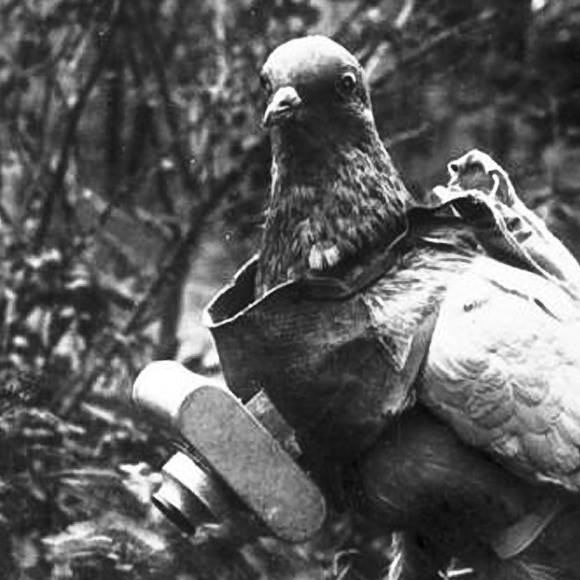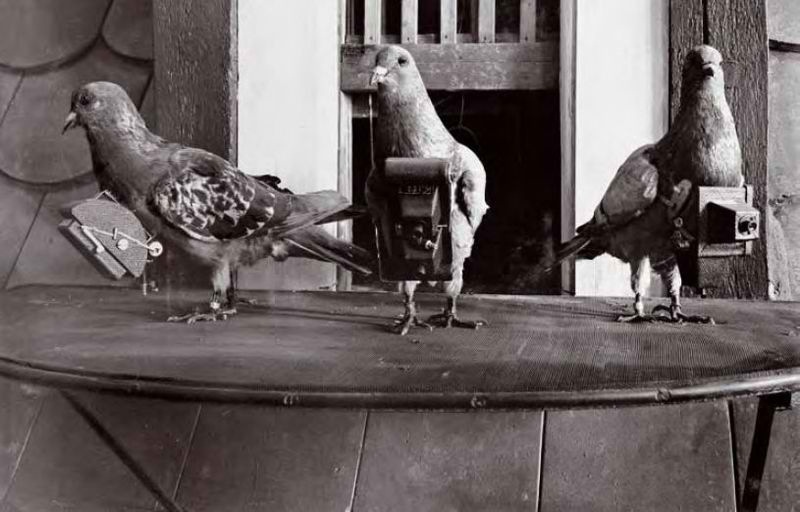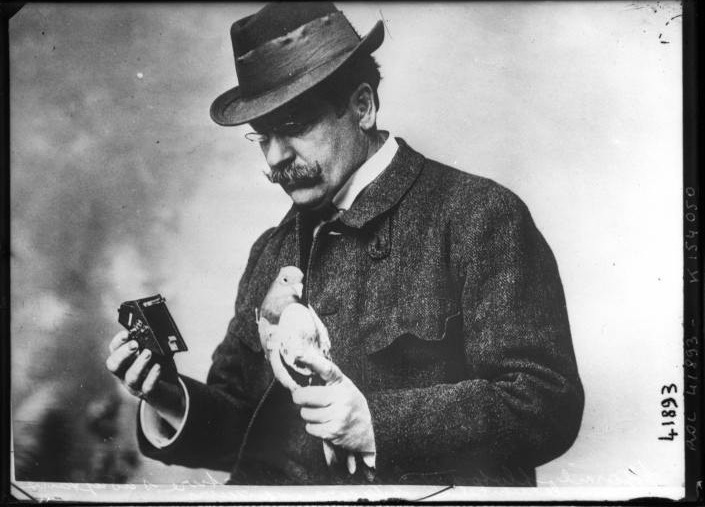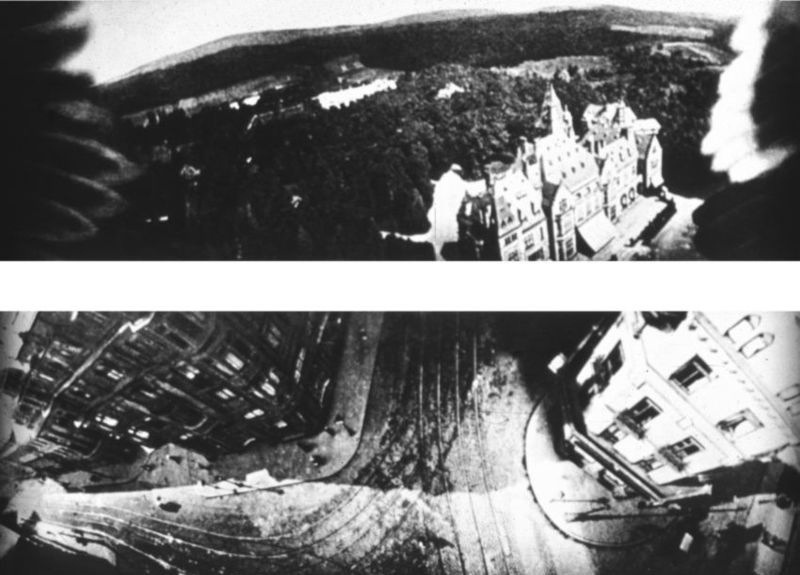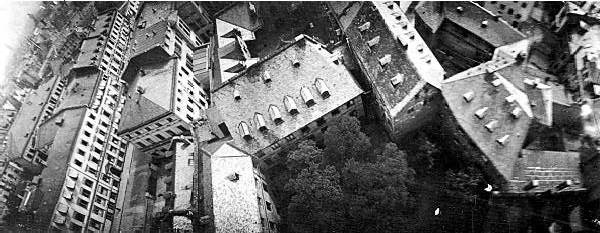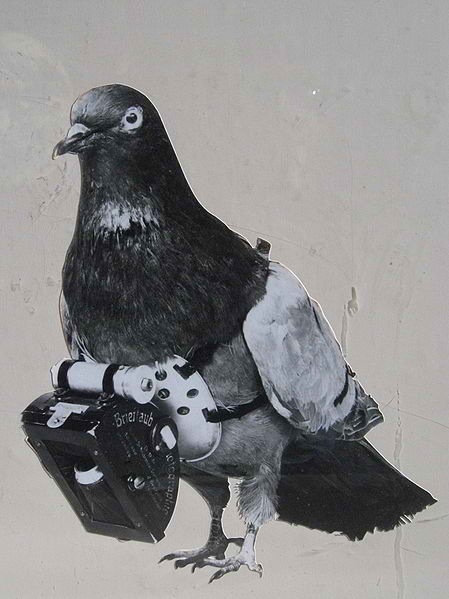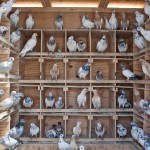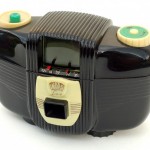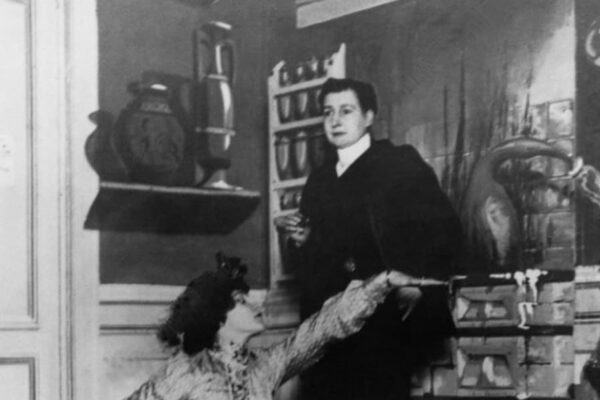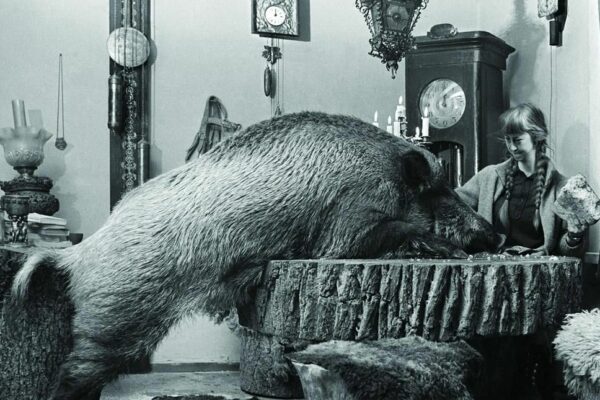In 1908 Dr Julius Neubronner patented a miniature pigeon camera activated by a timing mechanism. The invention brought him international notability after he presented it at international expositions in Dresden, Frankfurt and Paris in 1909–1911. Spectators in Dresden could watch the arrival of the camera-equipped carrier pigeons, and the photos were immediately developed and turned into postcards which could be purchased.
After some initial interest in the military potential of pigeon photography during World War I, the rapid advancement of aviation during the war saw interest quickly fade and Neubronner eventually abandoned his experiments. The United States Central Intelligence Agency (CIA) however, later developed a battery-powered camera designed for espionage pigeon photography. Details of its use remain classified.
(Images National Air & Space Museum Spy Technology Section via Wikimedia Commons)


